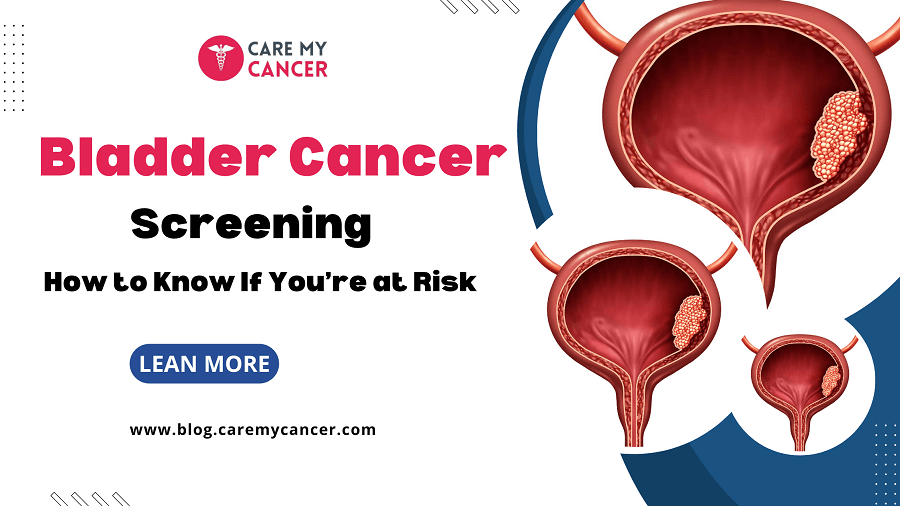Bladder cancer, though less common than some other cancers, poses a significant health risk, especially if detected late. Early detection through proper screening is crucial for effective treatment and better outcomes. Understanding your risk factors and the importance of screening can help you stay proactive about your health. This article delves into the details of bladder cancer screening and how you can assess your risk.
Bladder Cancer
Bladder cancer begins in the cells of the bladder, a hollow organ in the lower abdomen that stores urine. The most common type is urothelial carcinoma, which starts in the urothelial cells lining the inside of the bladder. Bladder cancer can be aggressive, spreading to other parts of the body if not treated promptly.
Why Is Bladder Cancer Screening Important?
Early detection of bladder cancer significantly increases the chances of successful treatment. When found early, bladder cancer is more likely to be confined to the bladder lining and less likely to have spread to other tissues or organs. Regular screening is essential, especially for individuals with higher risk factors.
Who Is at Risk of Bladder Cancer?
Understanding your risk is the first step toward determining whether you should consider regular bladder cancer screening. Here are some key risk factors:
1. Age and Gender
- Age: Bladder cancer is more common in older adults. The risk increases significantly after the age of 55.
- Gender: Men are more likely than women to develop bladder cancer, with men being four times more likely to be diagnosed.
2. Smoking
- Smoking is the leading risk factor for bladder cancer. Smokers are at least three times more likely to develop bladder cancer than non-smokers. The harmful chemicals in tobacco can enter the bloodstream, filtering through the kidneys and ending up in the bladder, where they can cause cancer.
3. Occupational Hazards
- Exposure to certain chemicals used in industries such as rubber, leather, textiles, and dye manufacturing can increase the risk of bladder cancer. Workers in these industries should be particularly vigilant about screening.
4. Chronic Bladder Conditions
- Individuals with chronic bladder inflammation, infections, or bladder stones may be at higher risk. Long-term use of urinary catheters is also associated with an increased risk.
5. Family History and Genetics
- A family history of bladder cancer can increase your risk. Additionally, certain genetic mutations and syndromes can predispose individuals to bladder cancer.
6. Previous Cancer Treatments
- People who have undergone radiation therapy to the pelvis or certain chemotherapy treatments have a higher risk of developing bladder cancer.
Signs and Symptoms of Bladder Cancer
Before diving into the screening process, it’s essential to recognize the symptoms of bladder cancer. While these symptoms can be caused by other conditions, they should never be ignored:
- Blood in the Urine (Hematuria): The most common symptom of bladder cancer is blood in the urine, which may be visible (gross hematuria) or detectable only through a urine test (microscopic hematuria).
- Frequent Urination: Increased frequency of urination, urgency, or pain during urination can be warning signs.
- Pelvic or Back Pain: Persistent pain in the pelvic region or lower back may indicate advanced bladder cancer.
- Unexplained Weight Loss and Fatigue: These symptoms, though less specific, can be associated with cancer.
How Is Bladder Cancer Screening Conducted?
Bladder cancer screening involves several tests and procedures designed to detect cancer at an early stage. If you are at higher risk, your doctor may recommend regular screening. The primary screening methods include:
1. Urinalysis
- A simple test that examines urine for signs of blood or other abnormalities. While it’s not specific for cancer, it can be an early indicator that further testing is needed.
2. Urine Cytology
- This test involves examining urine under a microscope to detect cancer cells. It’s often used if there’s blood in the urine or if a person is at high risk of bladder cancer.
3. Cystoscopy
- A cystoscopy is a more invasive test where a thin, flexible tube with a camera (cystoscope) is inserted through the urethra to examine the bladder’s interior. It allows doctors to see abnormal areas and, if necessary, take a biopsy for further examination.
4. Imaging Tests
- Imaging tests like CT urograms or MRIs can provide detailed pictures of the urinary tract, helping to identify tumors or abnormalities.
When Should You Get Screened?
The decision to undergo bladder cancer screening should be based on your risk factors and in consultation with your healthcare provider. Here are some general guidelines:
- High-Risk Individuals: If you have multiple risk factors, such as being over 55, smoking, and having a family history of bladder cancer, regular screening starting at an earlier age may be advisable.
- Occupational Exposure: If your work involves exposure to bladder cancer-linked chemicals, discuss regular screening with your doctor.
- Symptoms: Regardless of your risk, if you experience symptoms like blood in your urine, frequent urination, or pelvic pain, seek medical advice promptly.
Reducing Your Risk
While you can’t change certain risk factors like age or family history, you can take steps to reduce your risk of bladder cancer:
- Quit Smoking: If you smoke, quitting is the most crucial step you can take to lower your risk.
- Occupational Safety: Follow safety guidelines and use protective equipment if you work with harmful chemicals.
- Stay Hydrated: Drinking plenty of fluids, especially water, may reduce the concentration of harmful substances in your urine.
- Healthy Diet: A diet rich in fruits and vegetables, which contain antioxidants, may help reduce cancer risk.
Conclusion
Bladder cancer screening is a critical tool for early detection, particularly for those at higher risk. By understanding the risk factors, recognizing the symptoms, and following your doctor’s recommendations for screening, you can take proactive steps to protect your health. Remember, early detection is the key to successful treatment, so don’t hesitate to discuss screening with your healthcare provider if you believe you might be at risk.

